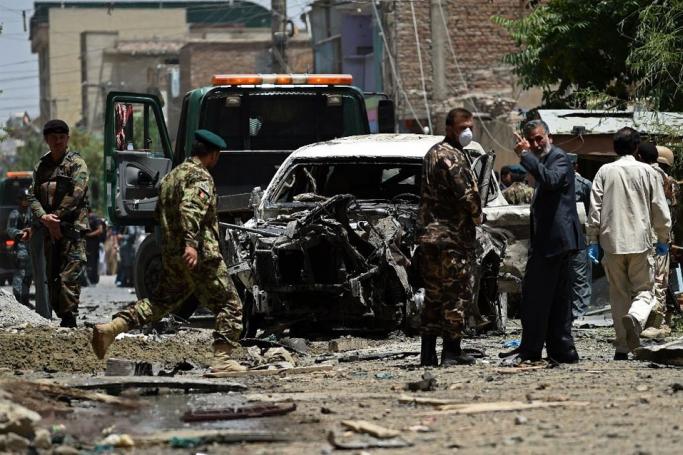Nearly 3,800 people were killed or injured around the world last year by improvised mines used by armed groups, marking the highest number of such casualties on record, campaigners said Thursday.
Monitors of compliance with the Mine Ban Treaty said that government use of landmines has all but halted, but warned that surging numbers of casualties linked to armed groups' use of improvised devices was marring the overall success of the 20-year disarmament charter.
After the treaty took effect in 1999, the annual number of casualties from landmines and explosive remnants of war steadily dropped, falling from nearly 10,000 to under 3,500 in 2013.
Stephen Goose, head of the arms division at Human Rights Watch and a contributor to the Monitor, pointed out that the treaty "has created a strong stigma against the weapons that affects even those who have not joined".
The treaty, which currently counts 164 state parties, has helped halt virtually all use of mines by governments, including those that have not signed on.
Myanmar, which is not party to the treaty, was the only country where government forces used antipersonnel mines over the past year.
"It is fair to say that tens of thousands and likely hundreds of thousands of lives and limbs and livelihoods have been saved by the mine-ban treaty," Goose told reporters in Geneva.
- 'Significant spike' -
But while nearly all governments are shunning landmine use, the use of explosive devises by armed groups is on the rise.
Last year, such groups used antipersonnel mines in at least six countries -- Afghanistan, India, Myanmar, Nigeria, Pakistan and Yemen -- while there were unconfirmed allegations of use in Cameroon, Colombia, Mali, Libya, Philippines, Somalia and Tunisia.
The use of such devices by non-state actors could explain why overall mine-linked casualties have again swelled in recent years.
"We have seen in the past four years a significant spike" in mine-related casualties, Lorn Persi, a victim assistance specialist with the Landmine Monitor, told reporters in Geneva.
Last year, a total of 6,897 casualties linked to various types of landmines and explosive remnants of war was recorded -- nearly double the 2013 figure, the monitor pointed out.
More than half that figure -- a full 3,789 injuries and deaths -- were caused by improvised devices.
Goose stressed though that the stigma of mines had also rubbed off on non-state actors as well, with some 70 rebel groups around the world having pledged since 1999 not to use the weapons.
"But clearly what has happened with a number of the non-state actors in recent years has gone against that trend," he said.
He pointed in particular to the Islamic State group in Syria and Iraq, the Taliban in Afghanistan and the Huthi rebels in Yemen, which have all "used improvised anti-personnel mines in great numbers."
© AFP












